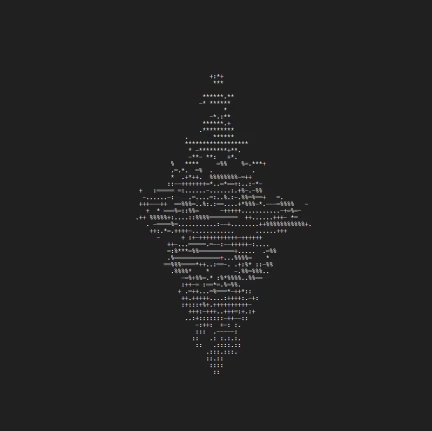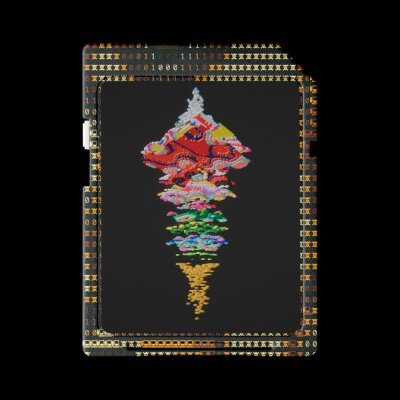Every now and then an NFT advent arrives that shakes the foundations of Web3. Initially, PFPs seemed to be the sole innovator of the metaverse. Then came text-based NFTs, open editions, minigames, and so on – expanding outward into more conceptual adventures like Soulbound Tokens and phygital goods.
Anecdotally, it’s anyone’s guess as to what could spark a new trend and generate both interest and copycats for a burgeoning sector of the NFT market. But after many hype cycles have come and gone and with no clear breadwinner currently in sight, an unlikely suspect has re-emerged from the annals of NFT history to recapture the imagination of the metaverse.
Instead of a “hot new thing” taking the spotlight, a project called Terraforms, born in the first NFT boom of 2021, takes center stage. But why has this unique, large-scale project once again become the talk of the blockchain?
What are Terraforms?
At its most basic level, Terraforms is a PFP project. But it is much, much more than that. Billed as a collection of “on-chain land art from a dynamically generated on-chain 3D world,” the project consists of 9,910 animated, text-based NFTs with a roadmap pointing to an MMORPG and metaverse experience called Hypercastles (more on that below). later on).
Launched December 17, 2021 by product studio Math castles – which consists of anonymous developers 0x113d And xaltgeist – each NFT within the Terraforms collections exists as a piece of animated art displayed on a 32×32 grid. These tokens are meant to represent an area of land, and each plot embodies a range of different attributes.
As with the many other NFT land-based efforts out there (Otherside, World Webb Land, etc.), there are several properties that can be exhibited within each individual Terraform.
These properties include 75 different “Zones”, which correspond to color palettes; 92 “Biomes”, which refer to the type of text characters and shapes that make up the grid and animation; and four different options of “Chroma”, which determine the speed of the animation’s cycling.
But the complexities don’t stop there. While each Terraform exists on its own as a Generative NFT, together they form a complex 20-level fictional structure known as a “Hypercastle,” as explained in the above video by Generative Artist and Hypercastle scouts founder of the project mmmatto (real name Matt Shadetek).
What are Hypercastles?
While the PFP market has historically been characterized by generative avatars consisting of random assortments of traits, each with different rarities, Terraforms offers a unique take on this rarity and trait system. That’s because, in addition to each Terraform living as a unique and individual piece of generative art, they also exist as a piece of a wider ecosystem: a Hypercastle.
In addition to its internal attributes, each Terraform token is also mapped structural metadata, which is usually referred to by a single NFT name, i.e. level 14 at {41, 22}. This data essentially explains the location of each 2D terraform within a larger 3D structure called a Hypercastle.


As explained by Shadetek in his video, “A Hypercastle has 20 vertical levels and tapers to a point at the top and bottom, with the widest points at levels 13 and 14.” He also notes that, in addition to its structural metadata, each Terraform token also contains information about its internal elevation, “in which the visible shapes in the 2D artwork correspond to elevations in a three-dimensional map.”
The structural information that dictates the size, shape, and position of each NFT is encoded in the smart contract of each Terraform token. This means that each Terraform is completely on-chain and its attributes can be referenced and reproduced by calling the tokens functions on-chain.
The unique Hypercastle element of the Terraforms project has led to a community forming around the Mathcastles ecosystem, with several developers using the project’s on-chain data to reinterpret the original concept of both Terraforms and Hypercastles .
In particular, Shadetek’s Hypercastle Explorers has become a popular facet of the Mathcastles ecosystem, as it renders a virtual environment of a Hypercastle using the Unity game engine. In addition, the community that has grown around the project has created an unofficial FAQ for people who want to learn more about the complex and growing ecosystem.
Terrain, Daydream, Terraform
In addition to existing as both a collection of 2D and 3D artwork and as building blocks for Hypercastles, Terraforms has a few additional features. These functionalities, or modes, come in three unique types and are potentially the most interesting facets of the project.
The first is ‘Terrain’. Terraform mode allows users to easily view a Terraform’s land art animation. This is the original state of a Terraform and features pulsating ASCII artwork. Next up is ‘Daydreaming’. Accessible by entering a command directly into the contract on Etherscan, this mode essentially transforms a Terraform into a drawing program of sorts. Finally, the “Terraform” mode connects every drawing a user creates back to the blockchain for others to view.
However, the last two modes have a unique caveat, as by drawing within a Terraform, users overwrite existing terrain artwork. While each Terraform pack can switch between daydreaming and terraforming indefinitely, the initial change from terrain to daydreaming can only happen once and is irreversible. Once you enter Daydream Mode, you can never go back to the original state of your Terraform.
This is where the real rarity methodology of the Terraform ecosystem comes into play. Because every change to a Terraform also changes the overall Hypercastle. And as the original state of the Hypercastle changes and deteriorates, the original project released by Matchacastles also changes forever.
Because of this, many collectors have put away their Terraforms. Perhaps they chose to keep the originality of their Terraform NFTs and the Hypercastle hold them like a grail, never to change or sell. But others have still embraced the collaborative aspect of the project and swept their NFT clean to make a new creation.
The current Terraforms hype
In 2023, Terraforms will make a tangible comeback. But why? Aside from the project resurfacing due to renewed interest and sharing from original collectors their love for the projectsome are beginning to wonder if more will follow in the near future.
More recently, this rumbling in NFT space has taken shape as speculation on a new large-scale collection of Mathcastles. While nothing has been confirmed, enthusiasts have been rumors are doing the rounds that a potential delivery collection of 20,000 with incentives from early adopters is on the horizon.
Aside from the secondary collection hype, the excitement over the project undoubtedly underscores the scope of the Terraforms vision. That is to say, the project was created as a long game and to be built on top rather than something to be maintained and promoted forever – a cycle some PFP collections have fallen into.
Whether or not there is more on the horizon, this latest round of attention is already being warmly welcomed by Mathcastles fans and collectors alike. Certainly, as more enthusiasts discover the complex ecosystem that has formed around Terraforms, they’ll find there’s more than enough to learn about the Genesis collection to keep them entertained.

